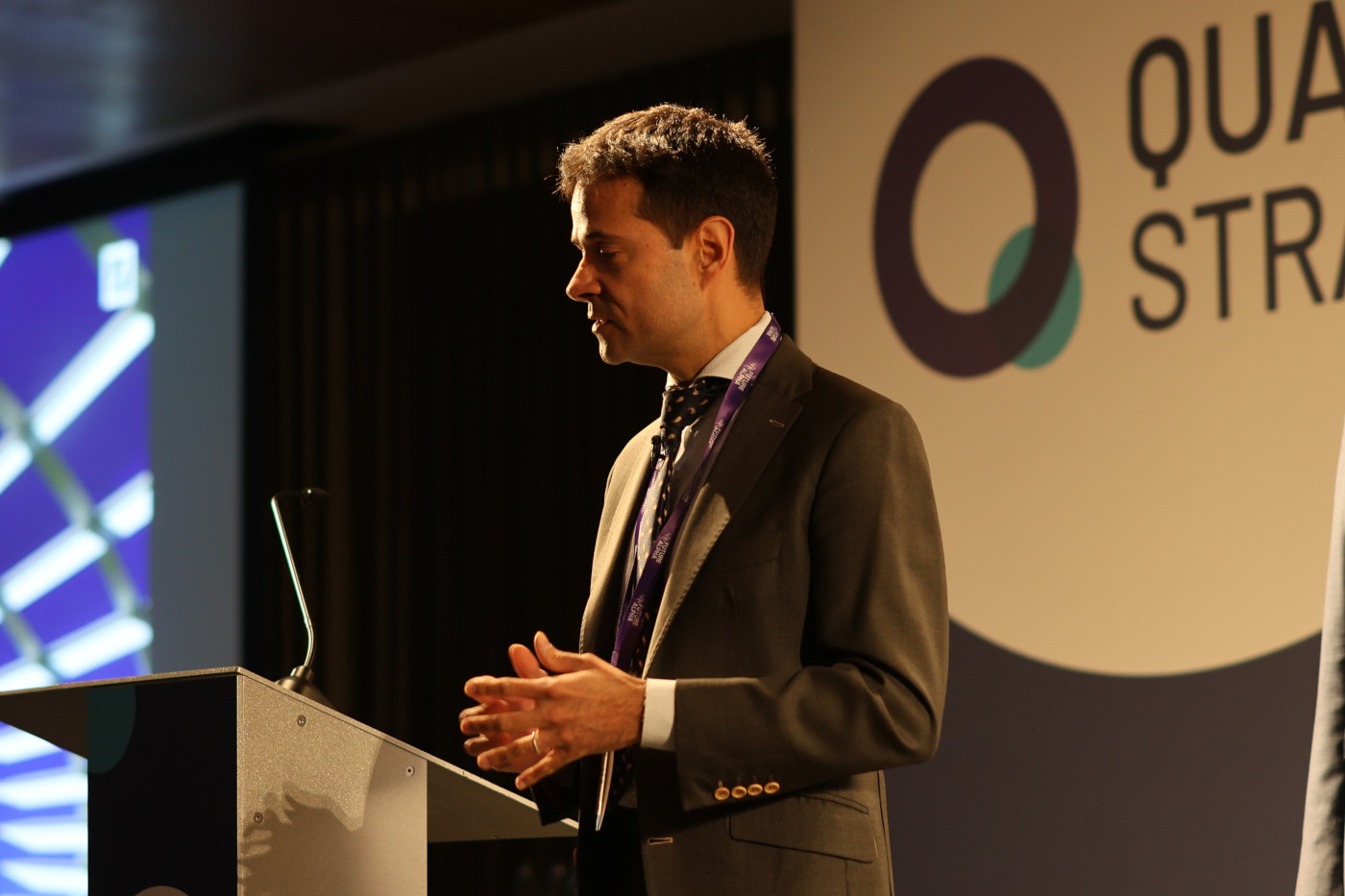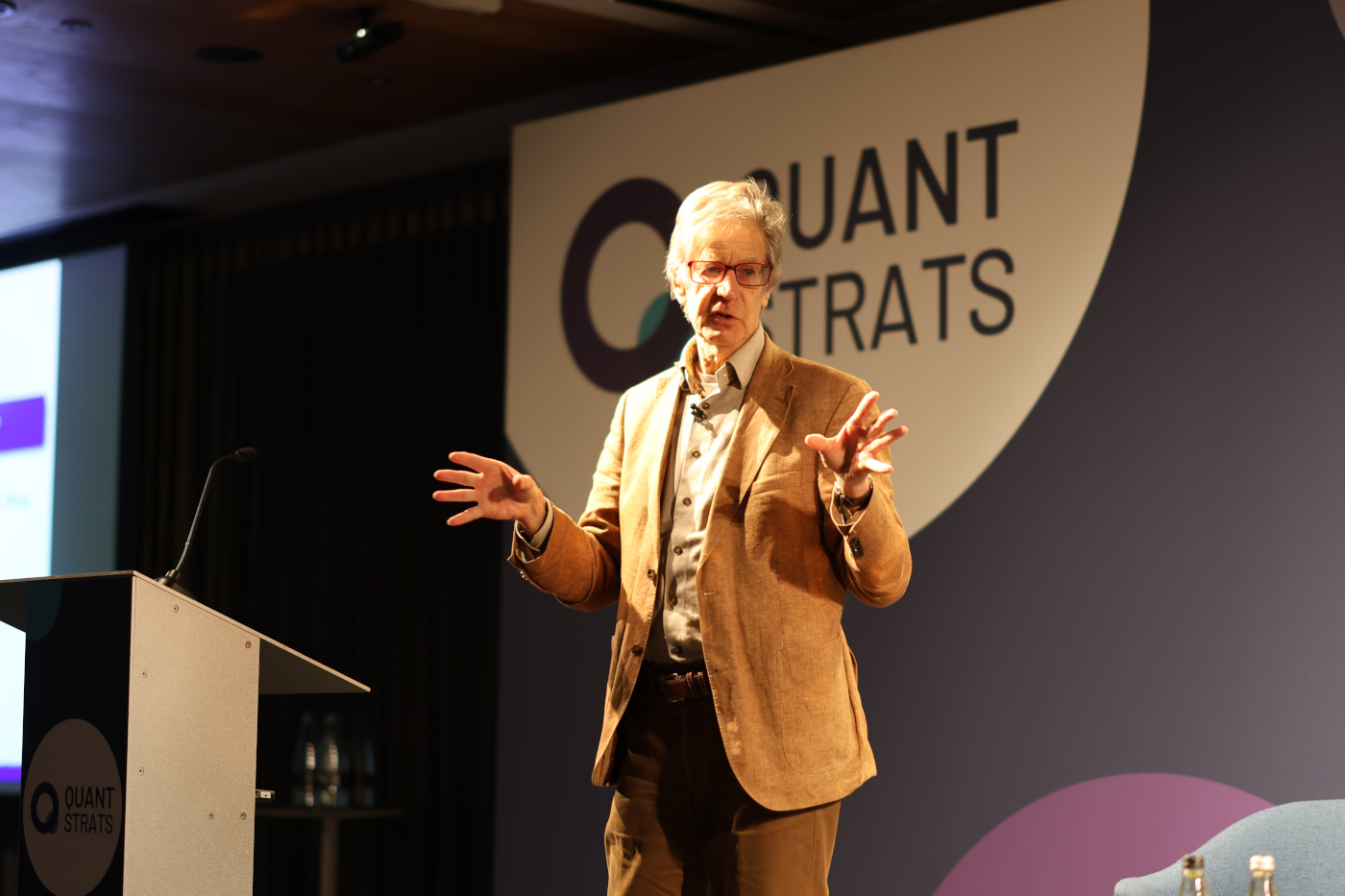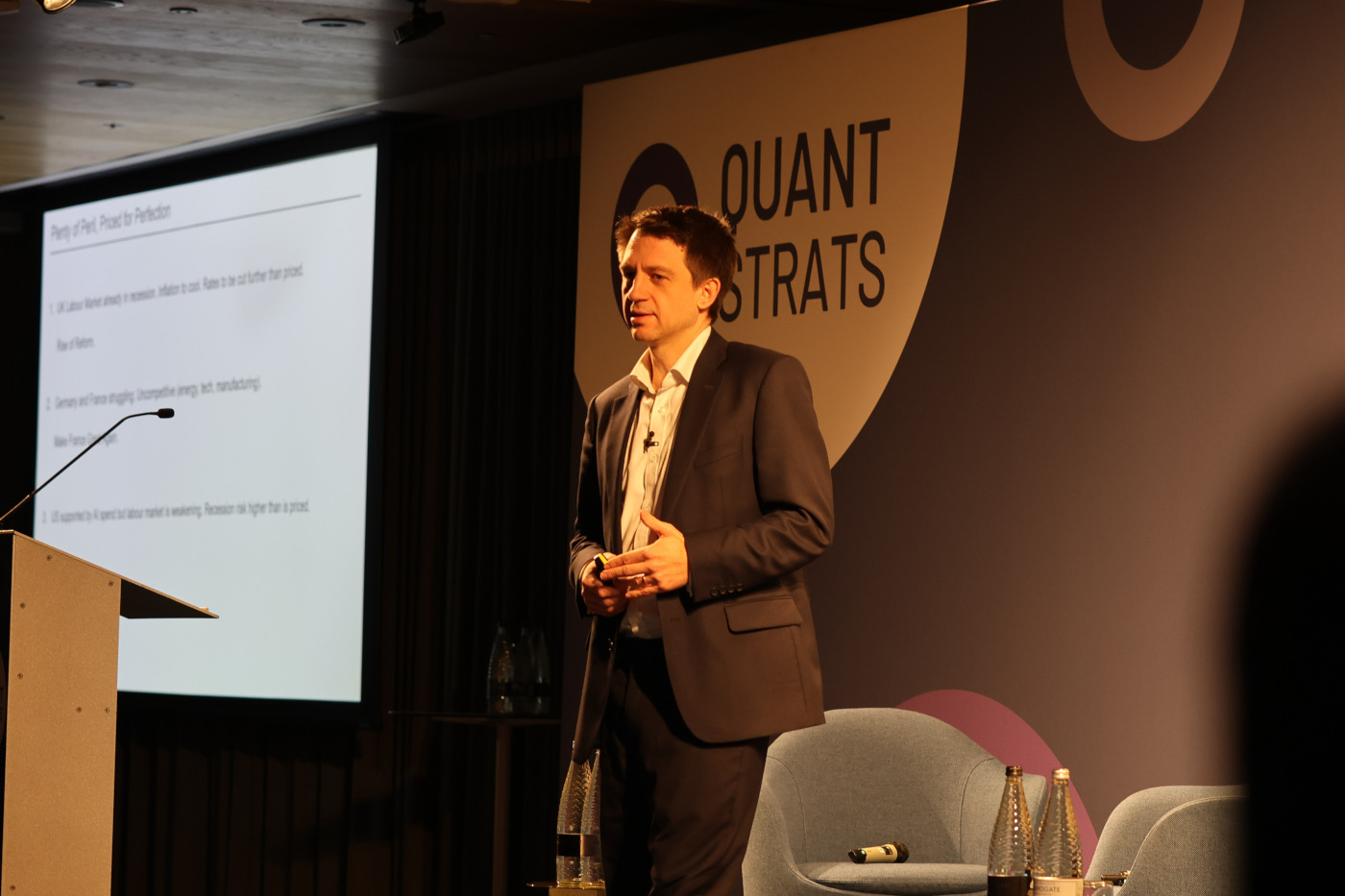Quant Strats has been a feature of the quant calendar for a number of years. I went to my first event recently after a couple of years. The event has evolved somewhat over time, and now covers two days, with a focus on ideas related to alpha generation as opposed to option pricing. This year it covered lots of different topics, such as AI, portfolio optimisation, time series forecasting, alternative data and much more. In this article, I write up a few of my takeaways from the event. Of course given the number of presentations and panels, many of which were going on at the same time, it is difficult to make it exhaustive. However, I hope this article will nevertheless give a flavour of what was discussed.
The macro view and timely data
Mike Bell kicked off the event with a look at the macro picture. He struck a bearish tone, particularly in the UK, noting that the private sector is already in recession, but the broader economy was still being supported by healthcare and education. However, he pushed back on the idea that the UK will continue to experience higher levels of inflation. Much of the inflation he argued was in electricity and gas bills, water bills, education etc. and was not driven by an excess of demand. Most of the food inflation recently had been from meat, crisps, bakery and chocolate. Europe was struggling particularly France and Germany. In the US, the labour market was struggling. ISM services have been pointing to weak new orders and real yields need to fall for debt to be sustainable.
Also on the economic front, Chris Williamson, S&P, discussed PMI indicators. He noted how there could be large differences in UK GDP between the initial estimate and the revised time series. By contrast, PMIs were published much more rapidly and they were not revised, whilst still being hard data (given the nature of the questions asked in the survey). They encompassed multiple industries these days, not purely manufacturing, and were a standardised indicator that could be used to make country based comparisons. Output prices from PMIs could lead CPI and they also exhibited a correlation with short term yields and central bank policy.
Risks and alpha

Alisa Rusanoff, Budha Bhattacharya, Vivek Anand, Prof Monica Billio and Christos Koutsouannis (clockwise)
There was a panel looking at quantifying the geopolitics moderated by Christos Koutsoyannis, Atlas Ridge, and panellists Alisa Rusanoff, Stealth Startup, Vivek Anand, DB, Prof Monica Billio, Ca Foscari University and Budha Bhattacharya, Lombard Odier. It was noted how risks have changed. These days we have different types of risks, both in climate and geopolitics. Historically, it was clearer, and confined more to financial and macro economic risks. There were also different ways in how these risk compounded. It was possible to do a blend of both qualitative and quantitative analysis to assess these, and tools like gen AI and deep research could help greatly. Correlations are very dynamic in markets, and it would help to stress test models, drawing data from many sources, including options data and news data.
On the alpha side, there were a number of discussions both in terms of data and strategies. Maarten Sumit, Northern Trust, Giuliano de Rossi, UBS Wealth, Kristina Ustaite, Robecco and Erdem Ultanir, Barclays participated in a panel on alternative data. They talked about a number of topics, such as the need to keep monitoring data quality. It was also important to have many signals which were diversified. As with an data usage, you had to deal with issues like missing data, and think about imputation techniques to fill gaps. An ability to assess quickly assess the value of a dataset was an advantage.

Caio Natividade, DB
Sticking to alpha, but more from the strategies side, Caio Natividade and Francisco Pozetti, DB presented a study on FX options, from the perspective of trying to go beyond traditional VRP strategies. The simplest vol based strategies tend to be short vol, but their objective was to look it from a relative value view, to understand how you could incorporate both long and short vol positions.
Modelling time series and tech

Andrew Harvey
There were talks on time series forecasting. Whilst LLMs have had many interesting applications, they are yet to make a splash on time series forecasting. Indeed, many of the LLM style time series models at present tend to underperform versus more custom models.
I’ll talk about the time series presentations from Andrew Harvey, Cambridge University and Wafaa Scheiffer, JPMorgan (and later Paul Bilokon who discussed them as part of his presentation). I was quite excited to see Harvey, given he’s a legend in the field of time series forecasting (and everyone doing forecasting has his various books!). He discussed trying to track bubbles and balloons (where price action tends to fizzle more slowly) using score based models, and the shapes of the distributions (generalised T distributions), which tended to be peaked. Assets like bitcoin had repeated bubbles and balloons. Whilst ML could be a useful tool, it was important to understand what you’re doing in the first place. You could have good baseline models, which we can interpret.
Schieffer’s presentation looked at time series in the context of forecasting gas demand and supply. The imbalance of these impacted price. She noted many characteristics of the problem that could help in forecasting, such as the highly seasonal household consumption in the UK. There could be an impact from the weather, and indeed, winter tended to be more sensitive to shifts. Whilst weather might be predictable in the relative short term, at longer terms horizons it was much more difficult, so it was more common to use longer term averages further out. The steep increase in prices during the Ukraine war, saw demand fizzle as households changed their behaviour. She also discussed using ML for time series forecasting. Whilst neural networks might be better with less obvious time series, sometimes simpler traditional non-neural network models could be enough, like random forests.

Wafaa Schieffer
Paul Bilokon, Thalesians, presentation covered a number of different topics he had researched with his students, including time series forecasting. Part of his presentation talked about extending econometric approaches with neural nets (deep econometrics), and filtering techniques, which got over some of the drawbacks of classical techniques which could lag, “deep filters” which combined Kalman filters with deep neural networks. He also discussed a new computation engine, xdb, which he had written, which could seamlessly port code to different targets (CPU, GPU and FPGA) and switch between them, so developers could choose the optimal target (without having to rewrite their stack).
Keeping to the tech theme, Barry Fitzgerald, Man Group, discussed deployment of models, answering the question of on premise vs. cloud, delving into topics such as security. When understanding the cost of the cloud, whilst cost of compute was larger on paper, we needed to factor in costs of your current infrastructure. There were also advantages to the cloud such as scalability. There were specific use cases from a quant research perspective, which required a lot of compute, like gen AI, HFT and ML.

Saeed Amen, Oudom Dy and Paul Bilokon (clockwise)
The commodities and fixed income perspective
I moderated two panels. The first panel was on systematic based strategies in fixed income and FX with Hamza Chaudhry, Alliance Bernstein and Alexandra Billon, BlackRock. We went over several subjects such as the impact of AI/LLMs (of course!) as well as some of the complexities involved in fixed income from a systematic point of view. The second panel was on commodities with Oudom Dy, Natixis and Paul Bilokon, Thalesians. We touched on the diversity in the commodities markets. This included changes in EU power markets, which will see a change from 1 hour to 15 minutes markets, as well as the energy transition and differences in the ways you might model different commodities markets.
Conclusion
There were many discussions, which spanned AI, risk, alpha and much more. It will be interesting to see how the quant landscape evolves in the coming years, and in particular how AI comes to embed itself in the area.
